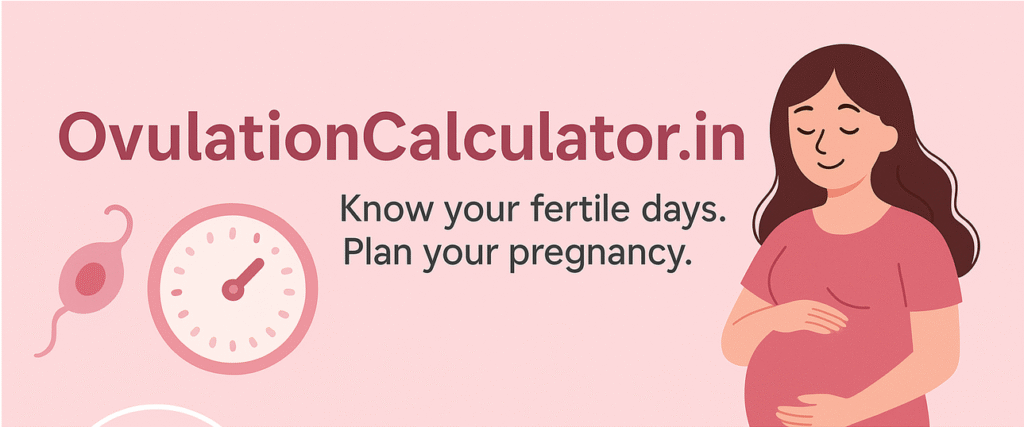
What Is Ovulation? Complete Guide for Beginners
Introduction to Ovulation
Ovulation is a crucial part of the menstrual cycle, playing a key role in fertility and conception. For women trying to conceive or those simply curious about their reproductive health, understanding ovulation is essential. This beginner-friendly guide explains what ovulation is, how it works, its signs and symptoms, and how tools like an ovulation calculator can help you track your fertile window.
What Is Ovulation?
Ovulation is the process where a mature egg is released from one of the ovaries, making it available for fertilization by sperm. This typically occurs midway through the menstrual cycle, around day 14 in a standard 28-day cycle, though the timing varies from person to person. Ovulation is triggered by a surge in luteinizing hormone (LH), which signals the ovary to release the egg.
The released egg travels through the fallopian tube, where it can be fertilized by sperm during the fertile window, which lasts about 12–24 hours. Understanding this process is vital for those planning to conceive or seeking to understand their reproductive health.
The Ovulation Cycle and Menstrual Phases
The menstrual cycle consists of several phases, with ovulation being a pivotal event. Here’s a breakdown of the cycle:
- Follicular Phase: Begins on the first day of menstruation and lasts until ovulation. The body prepares an egg for release by producing follicle-stimulating hormone (FSH).
- Ovulation Phase: Triggered by an LH surge, the ovary releases a mature egg. This is the most fertile time in the cycle.
- Luteal Phase: After ovulation, the ruptured follicle forms the corpus luteum, which produces progesterone to prepare the uterus for pregnancy. If no fertilization occurs, the cycle resets with menstruation.
Tracking your cycle can help pinpoint ovulation. Tools like the ovulation calculator on ovulationcalculator.in make it easy to predict your fertile days based on cycle length.
Signs and Symptoms of Ovulation
Recognizing ovulation symptoms can help identify your fertile window. Common signs include:
- Cervical Mucus Changes: Around ovulation, cervical mucus becomes clear, stretchy, and egg-white-like, aiding sperm movement.
- Basal Body Temperature (BBT) Shift: After ovulation, BBT rises slightly due to increased progesterone levels.
- Mild Pelvic Pain (Mittelschmerz): Some women experience a slight pain or cramping on one side of the pelvis.
- Increased Libido: Hormonal changes may boost sexual desire during the fertile window.
- Breast Tenderness: Hormonal fluctuations can cause mild breast sensitivity.
Tracking these signs, along with using an ovulation calculator, can improve your chances of identifying ovulation accurately.
How to Track Ovulation
Tracking ovulation is essential for those trying to conceive or avoid pregnancy. Here are popular methods:
- Ovulation Calculator: Input your cycle length and last period date into an online tool like ovulationcalculator.in to estimate your fertile days.
- Ovulation Predictor Kits (OPKs): These detect the LH surge in urine, signaling that ovulation is near.
- BBT Tracking: Measure your temperature daily to detect the post-ovulation rise.
- Cervical Mucus Monitoring: Observe changes in mucus consistency to identify fertile days.
- Calendar Method: Track cycle length over months to predict ovulation.
Combining these methods increases accuracy, especially for irregular cycles.
Factors Affecting Ovulation
Several factors can influence ovulation, including:
- Hormonal Imbalances: Conditions like polycystic ovary syndrome (PCOS) or thyroid issues can disrupt ovulation.
- Stress: High stress levels may delay or prevent ovulation.
- Weight Changes: Being underweight or overweight can affect hormone levels and ovulation.
- Medications: Certain drugs, like antidepressants, may impact the ovulation process.
- Age: Ovulation frequency and egg quality decline with age, especially after 35.
Consult a healthcare provider if you suspect irregular ovulation or have trouble conceiving.
Tips for Boosting Fertility During Ovulation
To maximize your chances of conception during ovulation:
- Time Intercourse: Have sex during the fertile window, ideally every 1–2 days.
- Maintain a Healthy Lifestyle: Eat a balanced diet, exercise moderately, and avoid smoking or excessive alcohol.
- Manage Stress: Practice relaxation techniques like yoga or meditation.
- Track Ovulation: Use tools like ovulationcalculator.in to identify your fertile days accurately.
- Consult a Specialist: If conception doesn’t occur after 6–12 months, seek medical advice.